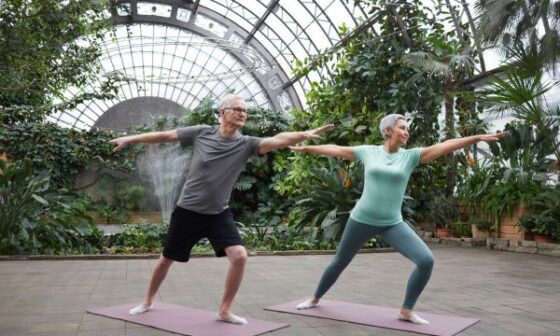Imagine a cozy evening with your partner, wrapped in each other’s arms, feeling a sense of warmth and security that only comes from a tight embrace. This simple act of cuddling holds a powerful place in the world of relationships, as couples across the globe indulge in the joy and comfort it brings. But have you ever wondered why couples cuddle? What is it about this intimate act that draws us closer and strengthens our connection? In this article, we will delve into the fascinating reasons behind why couples cuddle and explore the scientific, emotional, and relational benefits it offers. So, get ready to unravel the secrets behind this beloved act of tenderness, as we embark on a journey into the heartwarming world of cuddling.
Why Do Couples Cuddle
Cuddling serves several purposes and benefits for couples:
1. Physical Comfort and Warmth: Cuddling provides a sense of physical comfort and warmth. The body heat exchanged during cuddling can help regulate body temperature and create a feeling of coziness.
2. Bonding and Connection: Cuddling promotes bonding and emotional connection between partners. Physical touch releases oxytocin, often referred to as the “love hormone,” which enhances feelings of trust and attachment.
3. Stress Reduction: Physical touch, including cuddling, triggers the release of endorphins, which are natural “feel-good” chemicals. This can lead to reduced stress and anxiety levels for both partners.
4. Intimacy: Cuddling fosters intimacy between partners. It’s a way to express affection and care without necessarily involving sexual activity.
5. Communication: Non-verbal communication is an important aspect of any relationship. Cuddling allows partners to communicate their feelings and emotions without using words.
6. Relaxation and Sleep: Cuddling can help partners relax and wind down, making it easier to fall asleep. Feeling safe and secure in each other’s arms can lead to more restful sleep.
7. Reaffirming Commitment: Cuddling can serve as a reminder of the commitment and love partners share. It’s a way to physically reaffirm the relationship and provide a sense of stability.
8. Physical Health: Physical touch has been shown to have positive effects on overall health. It can lower blood pressure, improve the immune system, and reduce the perception of pain.
9. Emotional Support: Cuddling offers emotional support during times of distress or sadness. Being held by a partner can provide a sense of comfort and reassurance.
10. Quality Time: Cuddling is a way for couples to spend quality time together, even if they’re not engaging in any specific activity. It creates opportunities for couples to relax, talk, and enjoy each other’s company.
Cuddling is a universal display of affection and intimacy, often seen among couples. It involves embracing, holding, and snuggling with a partner in a warm and loving manner.
The Science Behind Cuddling
Cuddling Releases Feel-Good Hormones
Cuddling triggers the release of feel-good hormones like oxytocin, dopamine, and serotonin. These hormones contribute to feelings of happiness, contentment, and relaxation, promoting a sense of well-being in individuals. When couples cuddle, their bodies undergo physiological changes that lead to an increase in these hormones. The physical contact and intimacy associated with cuddling stimulate the release of oxytocin, often referred to as the “love hormone,” which plays a crucial role in bonding and attachment.
The Role of Oxytocin
Oxytocin is a hormone produced in the hypothalamus and released by the pituitary gland. It acts as a neurotransmitter in the brain and is associated with various social and emotional behaviors. During cuddling, oxytocin floods the body, creating a sense of warmth, connection, and trust between partners. It strengthens the emotional bond, promotes feelings of safety and security, and enhances overall relationship satisfaction.
Emotional Connection and Intimacy
Cuddling and Bonding
Cuddling fosters a sense of emotional closeness and bonding between couples. It creates a safe space where partners can express affection, vulnerability, and love, deepening their emotional connection. The act of cuddling provides an opportunity for couples to escape the distractions of everyday life and focus on each other. It encourages non-verbal communication, as the physical embrace speaks volumes about love, comfort, and reassurance.
Middle-Aged Men and Emotional Tenderness
Studies suggest that middle-aged men, who may often suppress their emotions due to societal expectations, can benefit greatly from cuddling. It provides them with a nurturing environment to express tenderness, emotional support, and vulnerability. Cuddling allows men to break down emotional barriers, release stress, and experience a sense of emotional well-being. It offers a space where they can let their guard down and feel understood and appreciated by their partner.
Expert Perspectives on Cuddling
Experts in the field of relationships and psychology emphasize the significance of cuddling as a means of non-verbal communication, emotional support, and intimacy. They view it as an essential component of a healthy and thriving relationship. According to relationship therapist Dr. John Gottman, physical affection and touch, including cuddling, contribute to the emotional bank account of a relationship. The more positive physical contact couples engage in, the stronger their bond becomes.
The Benefits of Cuddling
Strengthening Relationship Bonds
Cuddling helps to strengthen the bonds between couples by fostering trust, affection, and mutual understanding. It provides reassurance and creates a sense of security within the relationship. Regular cuddling allows couples to connect on a deeper level, building a foundation of love and support that withstands the tests of time.
Reducing Stress and Anxiety
Cuddling has a calming effect on the body and mind. It helps to reduce stress, anxiety, and tension, promoting relaxation and overall well-being. When couples cuddle, their bodies release endorphins, which act as natural painkillers and stress relievers. The physical touch and closeness experienced during cuddling activate the parasympathetic nervous system, which counteracts the effects of stress and promotes relaxation.
How Cuddling Enhances Relationships
1. Building Trust and Communication
Regular cuddling builds trust and enhances communication between partners. It encourages open and honest dialogue, allowing couples to express their needs, desires, and emotions in a safe and nurturing environment. The vulnerability that comes with cuddling fosters a deeper understanding of one another’s needs and fosters a sense of emotional connection and security.
2. Enhancing Intimacy and Romance
Cuddling is an intimate act that can ignite passion and desire in a relationship. It creates a sense of physical closeness and affection, promoting a deeper level of intimacy and enhancing the romantic connection between partners. Cuddling is not solely limited to the act itself but can also serve as a precursor to other forms of physical intimacy. It builds anticipation and excitement, setting the stage for deeper emotional and physical connections.
Conclusion
Cuddling plays a vital role in enhancing relationships by fostering emotional connection, trust, and intimacy. Through the release of feel-good hormones and the creation of a safe and loving space, couples can experience the numerous benefits of cuddling. So, embrace your partner, enjoy the warmth, and let cuddling strengthen the bond you share.
FAQs
1. Is cuddling only for romantic partners? Cuddling can be enjoyed by romantic partners, but it is not exclusive to them. Friends, family members, and even pets can also participate in cuddling to experience its benefits.
2. Can cuddling help resolve relationship conflicts? While cuddling alone may not resolve conflicts, it can create an environment of comfort and safety that encourages open communication and understanding, which can contribute to conflict resolution.
3. How long should couples cuddle? The duration of cuddling can vary depending on personal preferences and comfort levels. Some couples may enjoy brief moments of cuddling, while others may prefer longer sessions. It’s important to find a balance that works for both partners.
4. Are there any situations where cuddling may not be suitable? Yes, there may be situations where cuddling may not be suitable, such as during times of illness, physical discomfort, or when one partner explicitly expresses their discomfort or desire for personal space.
5. Can cuddling have a positive impact on long-distance relationships? While physical distance can pose challenges, finding alternative ways to connect, such as virtual cuddling sessions, can help maintain a sense of closeness and intimacy in long-distance relationships.







